Global warming - the burning environmental issue
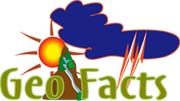 Do
you know what global warming is? This is one of the most popular
environmental issues discussed these days. Do
you know what global warming is? This is one of the most popular
environmental issues discussed these days.
This is a global problem, and can affect all countries in the world,
especially islands like ours. Due to this problem, our country, along
with other islands like the Maldives, is in danger of disappearing off
the face of the Earth.
Natural warming
The greenhouse effect is a natural warming process. Carbon dioxide
(CO2) and certain other gases are always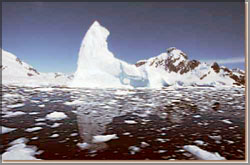 present in the atmosphere. These gases create a warming effect that has
some similarity to the warming inside a greenhouse, hence the name
'greenhouse effect'.
present in the atmosphere. These gases create a warming effect that has
some similarity to the warming inside a greenhouse, hence the name
'greenhouse effect'.
Amplified warming (increasing the amount of greenhouse gases)
intensifies the greenhouse effect. Higher concentrations of CO2 and
other greenhouse gases trap more infrared energy in the atmosphere than
which occurs naturally. The additional heat further warms the atmosphere
and Earth's surface.
Earth's carbon cycle
The Earth maintains a natural carbon balance. When concentrations of
CO2 go up, the system works to return to its natural state. This natural
process happens slowly, compared to the rapid rate at which humans are
releasing carbon into the atmosphere by burning fossil fuel.
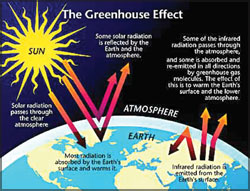 The
natural system of carbon removal can't keep pace, so the concentration
of CO2 in the atmosphere increases. The
natural system of carbon removal can't keep pace, so the concentration
of CO2 in the atmosphere increases.
The natural carbon balance
Carbon is continually exchanged within a closed system consisting of
the atmosphere, oceans, biosphere and landmass. There are short and
long-term cycles. Long-term cycles:
Over millions of years, the carbon in the air is combined with water to
form weak acids that very slowly dissolve rocks.
This carbon is carried to the oceans where some form coral reefs and
shells. These deposits will be moved deep into the Earth by drifting
continents and eventually, released into the atmosphere by volcanoes.
Short-term cycles: Carbon
is exchanged rapidly between plants and animals through respiration and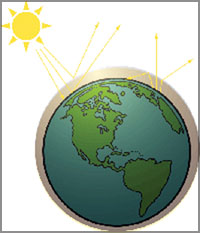 photosynthesis, and through gas exchange between the oceans and the
atmosphere.
photosynthesis, and through gas exchange between the oceans and the
atmosphere.
Upsetting the balance
First, we'll understand the human impact on upsetting the carbon
balance. Like all other animals, humans participate in the natural
carbon cycle, but there are also important differences.
By burning coals, oil and natural gas, humans add CO2 to the
atmosphere much faster than the carbon in rocks is released through
natural processes. Clearing and burning forests to create agricultural
sand converts organic carbon to carbon dioxide gas.
The oceans and land plants absorb a portion of this gas, but not all
of the CO2 added to the atmosphere by human activities.
The natural climate cycle
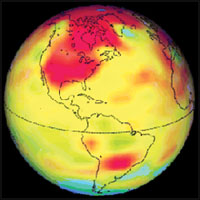 Climate
change occurs through many processes, and could be the result of both
natural and human causes. The impact and intensity of human causes have
been increasing during the past few decades. CO2 other greenhouse gas
variations and human activities are some of the causes. Climate
change occurs through many processes, and could be the result of both
natural and human causes. The impact and intensity of human causes have
been increasing during the past few decades. CO2 other greenhouse gas
variations and human activities are some of the causes.
Many natural and human-made gases contribute to the greenhouse effect
that warms the Earth's surface. Water vapour is the most important,
followed by CO2, Methane (CH4), Nitrous Oxide (N2O), and the Chloro
Fluro Carbons (CFCs) used in air-conditioners and many other processes.
The increasing atmospheric CO2 concentration is likely the most
significant cause of the current warming. The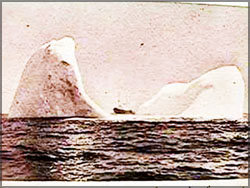 oceans play an important role in determining the atmospheric
concentration of CO2. Changes in oceans may affect the climate by slowly
moving CO2 into or out of the atmosphere. A volcanic eruption may send
ash and sulphate gas high into the atmosphere.
oceans play an important role in determining the atmospheric
concentration of CO2. Changes in oceans may affect the climate by slowly
moving CO2 into or out of the atmosphere. A volcanic eruption may send
ash and sulphate gas high into the atmosphere.
We will give you more facts about global warming in our next article
as well. So, keep reading.
Compiled by Janani Amarasekara |
